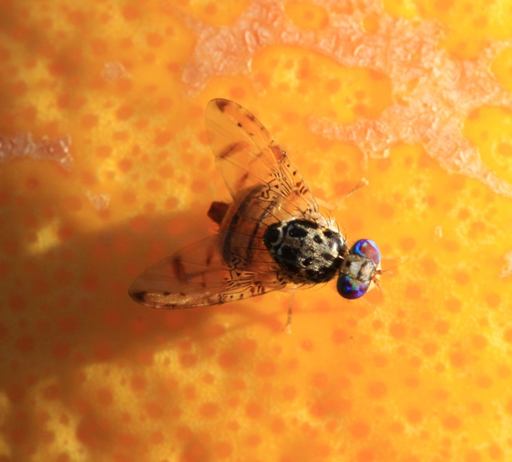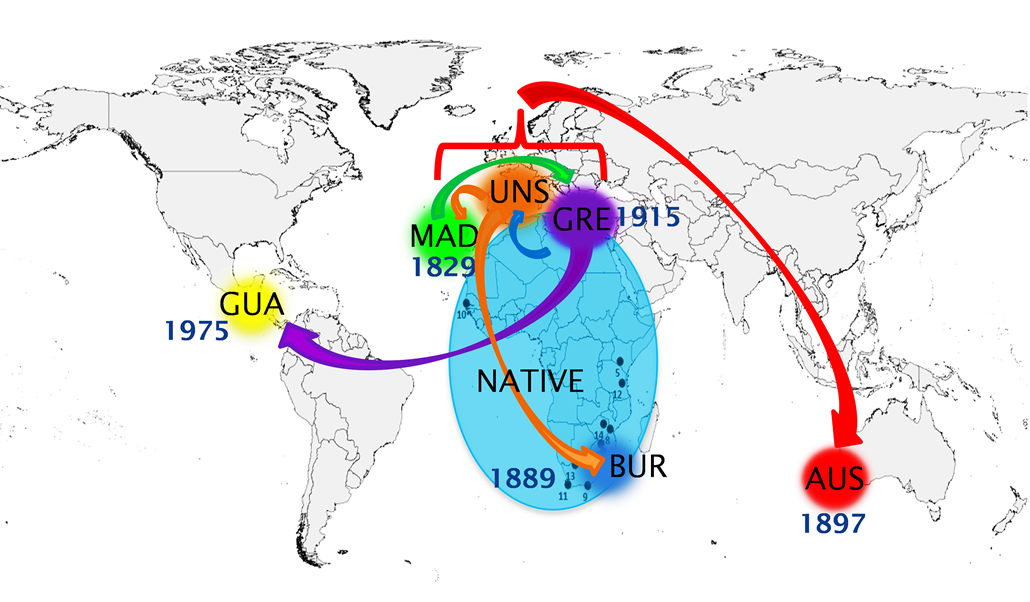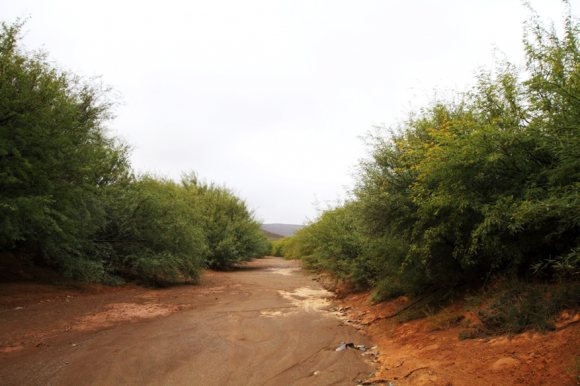13 July 2015 | By Minette Karsten
In a rapidly changing world, the ability to prevent invasions by intercepting foreign organisms or by implementing quarantine measures is critical. Few studies however investigate the effectiveness of such measures in preventing new or ongoing invasions.

A recent study from C·I·B core team members, including Profs John Terblanche (Stellenbosch University) and Bettine Jansen van Vuuren (University of Johannesburg), used genetic markers to determine the population genetic structure (the movement of individuals between different sampling localities) and the potential routes of invasion (the path taken to the introduced range) in the Mediterranean fruit fly (Ceratitis capitata).
Results showed that the flies move freely between locations on the African continent, but not from their African native range to the introduced range. Making use of Approximate Bayesian Computations (ABC) Minette Karsten, a PhD student at Stellenbosch University, showed that the likely invasion pathway of the fly was an initial colonization of Europe from Africa (the native range) and a secondary colonization of Australia from Europe (Figure 1). The authors further showed an introduction from Europe to the Americas and a back-introduction into South Africa from Europe.
“Given the lack of new introductions into colonized, non-African locations despite growing trade, it is clear that quarantine and interception measures for export consignments from Africa have been largely successful.” says Minette Karsten. She adds “A concern, however, is the high levels of movement of flies over the African continent. This does not bode well for the fruit industry on the continent, especially in the light of preventing new invasions into previously pest-free regions.”
Read the paper
For more information, contact Minette Karsten at minettek@sun.ac.za




